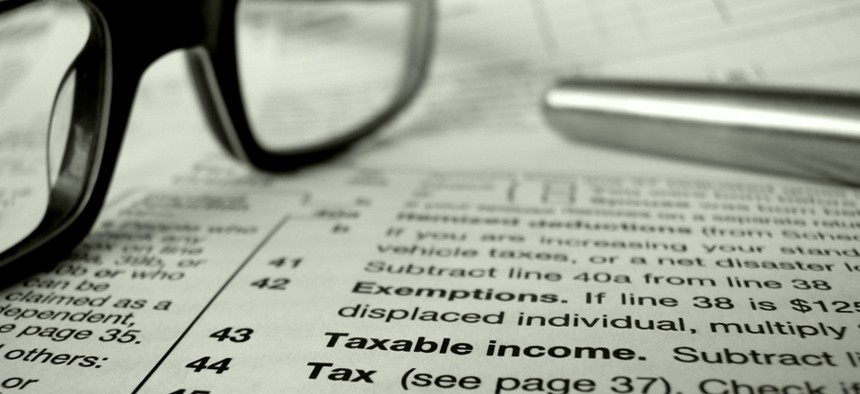
Mr Doomits/Shutterstock.com
Generally, I keep this column limited to the basics of federal retirement benefits, but sometimes I like to dig a little deeper. This week, my inspiration comes from the following comment on my May 1 column, The 4 Keys to Boosting Your Savings:
May I suggest a similar column illustrating historical tax rates? I realize that with the deficit and expanding demands of our government services because of the exponentially growing public demand and deteriorating infrastructure, taxes can only go up.
That made me curious, so I looked online and found historical rates dating back to 1913 listed in nominal and inflation-adjusted (2013) dollars. For example, in 1948 there was a 91 percent tax bracket, applying to income that exceeded $1,905,344 (in 2013 dollars). But income between $95,267 and $114,321 (in 2013 dollars) was taxed at a marginal rate of 38 percent. The lowest tax rate that year was 20 percent, applying to the first $19,053 of income.
In 1937, tax rates went as high as 79 percent, but income between $95,664 and $127,552 (in 2013 dollars) was taxed at the marginal rate of only 10 percent. That leads me to conclude that even though there were higher marginal rates back then, most of today’s federal employees and retirees would pay around the same or less taxes. (What’s missing is the adjustments and deductions to taxable income. This seems to be one of those statistical items that can be slanted in a debate to fit the situation.)
As for future rates, I consulted Joe, one of my financial adviser associates, for his expertise. Joe said he agreed with the commenter that income tax rates likely will be higher in the future. However, he noted, there are multiple ways we are taxed and income taxes are only one of them. It’s very difficult to predict what an individual’s overall tax burden might be at some point in the future.
International Investments
The commenter also asked about international stocks in the Thrift Savings Plan’s I Fund:
Another point for an article is the impact (positive and negative) of the dollar on the I Fund. The C and S are easy to understand with the value of the underlying stocks, but the I Fund has the added vector of the dollar exchange rate and repatriation of dollars by U.S. companies who are in the EAFE [Index]. A question would be, given constant earnings, would the investor do best in a strong dollar or a weak dollar with the I Fund?
According to Joe, the reader’s comment is correct on the impact of the exchange rate on the I Fund’s performance. When investing in international stocks, you can make or lose money two ways: the performance of the company and the relative value of those earnings when converted to dollars.
The best scenario, he notes, is to have both factors be positive: The underlying currency strengthens and the foreign company does well. This is another reason why it makes sense to not only diversify your stock holdings domestically, but internationally as well. The EAFE is a well-diversified index in this respect.
Get Informed
One last thing: It’s unfortunate that not all federal employees get the in-depth information they need about planning for their retirement. To address this issue, I’m partnering with Micah Shilanski, a certified financial adviser and founder of Plan Your Federal Retirement. Micah and I have decided to launch a webinar series that will provide some of the important information contained in a typical pre-retirement seminar. The first part of the introductory three-part series will be broadcast live on June 12 at 2 pm ET. This webinar series will focus on those in the Federal Employees Retirement System who are between mid-career and retirement. Click here for more information and to register.
Where are you in the retirement planning process? Take our online assessment and find out.
(Image via Mr Doomits/Shutterstock.com)
NEXT STORY: A Special Sick Leave Bank for Disabled Vets?







